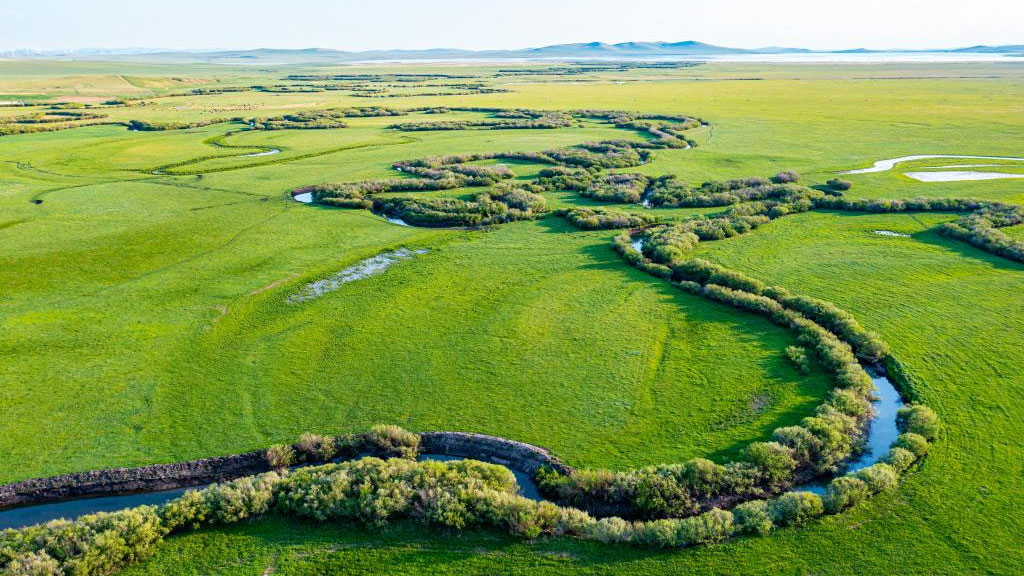China, New Zealand discuss significance of Dunhuang culture in promoting cultural exchange, cooperation
WELLINGTON, June 17 (Xinhua) -- The role of China's Dunhuang culture, the precious heritage of humanity, has been discussed in the connection between New Zealand and China.
Dunhuang culture, located in northwest China's Gansu Province, is a perfect combination of architecture, sculpture and mural painting with a history of nearly 2,000 years.
"It is an art museum in the Eastern World and a jewel of human civilization. At the same time, Dunhuang culture is also a symbol of long-term exchanges of various civilizations, a history of East-West convergence along the Silk Road," China's Deputy Consul General in Christchurch Zhai Xingfu told Xinhua on Saturday.
An online lecture on the Dunhuang culture was held on Friday by the Gansu Foreign Affairs Office and the Dunhuang Academy, which was one of the nine events to promote the cultural heritage globally.
Although Dunhuang is thousands of miles away from New Zealand's South Island, the interaction between the two places began as early as the 1940s, Zhai told the officials and scholars from both China and New Zealand attending the online lecture.
Exactly 80 years ago, in the year 1943, while Rewi Alley, a pioneer in China-New Zealand relations, was running the Bailie School in north China's Shaanxi Province to train young people for China's future, a famous British scientist Joseph Needham was on a research trip to Dunhuang and met Alley on his way.
Learning that Alley intended to move the school, Needham persuaded Alley to travel with him. The two came to Dunhuang together, accumulating many valuable historical materials.
On their way, they stopped twice in Shandan, Gansu, the landscape of which made Alley feel like in his hometown in New Zealand's Canterbury. Alley finally decided to move the school to Shandan.
An old friend of the Chinese people, Alley had spent 60 years living and working in China before he died in 1987 in Beijing.
"It constantly reminds us of the need for all countries to actively engage in cultural exchange in order to embrace, learn and absorb the best of all civilizations," Zhai said.
History connects picturesque New Zealand's South Island with splendid Dunhuang city, inspiring people to inherit and carry forward Alley and Needham's internationalist spirit of perseverance, courage and selflessness, he added.
Dunhuang's statues and mural paintings absorb the essence of ancient Greek, ancient Indian and ancient Persian art, making the Dunhuang culture a pioneering example of cultural exchanges and coexistence between the East and the West, a demonstration of openness and inclusiveness of Chinese civilization, Zhai said.
The Belt and Road Initiative, marking its 10th anniversary this year, inherits the ancient spirit of openness and inclusiveness of the Dunhuang culture while granting the ancient Silk Road the vitality of the new era, Zhai said.
New Zealand joined the Belt and Road Initiative in 2017, he said, adding China and New Zealand are expected to carry out more people-to-people exchanges and practical cooperation.
Chris Lipscombe, the national president of the New Zealand China Friendship Society, said Dunhuang was an important staging post on the ancient Silk Road, the network of roads that connected Eurasia and along which luxury goods like silk travelled from workshops in China to the markets of the Roman Empire.
The goal of linking together the cultural heritage of Dunhuang with Christchurch in Canterbury of New Zealand is a powerful reminder of how, in this century, the Belt and Road Initiative is also bringing people together in a new common endeavor, Lipscombe said.
He also stressed the significance of the medieval caves known as the Dunhuang Grottoes, which are the home of Buddhist statues and murals dating from the 4th to the 14th centuries.
Photos
Related Stories
- China, New Zealand to further enhance science cooperation
- Chinese dairy giant's new plant marks China-New Zealand cooperation: ambassador
- China, New Zealand ready to promote military relations: defense spokesperson
- Chinese archaeologist donates 1.45 mln USD to support Dunhuang studies
- Night markets shine with cultural elements in NW China's Dunhuang
Copyright © 2023 People's Daily Online. All Rights Reserved.









